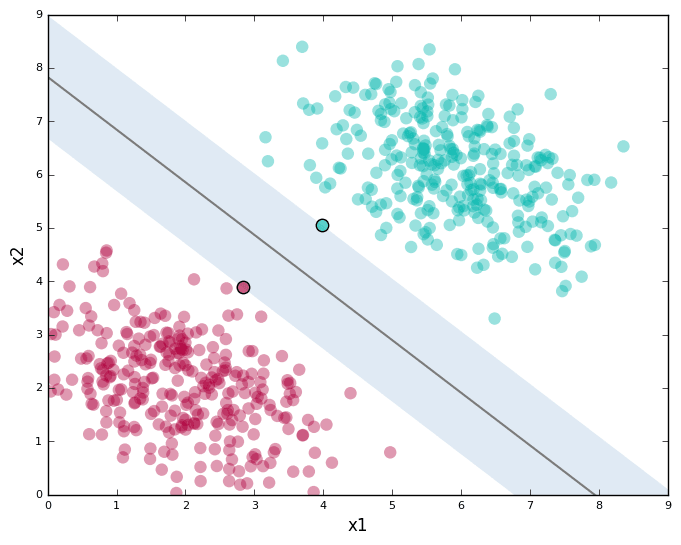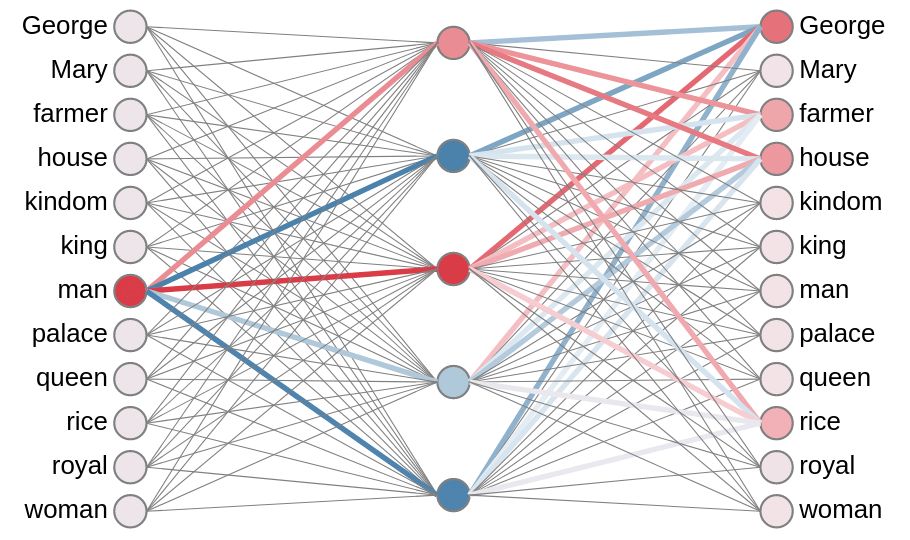The Vectors of Language
Recall that in previous iterations we described the required steps for
our code classifier to work, which can be roughly summarized as:
Fetching data.
Representing code as vectors.
Training the classifier.
Making predictions.
Feeding new data back to the source.
It wouldn’t be an overstatement to say that, out of all of these,
probably the hardest and most delicate step is representing code as
vectors. Why? Because it is the one least understood. There are numerous
helpers to handle data gathering, even at large scale. Neural networks,
or in general machine learning algorithms for classification? Done. The
infrastructure and working environment are also already there. Amazon
Sagemaker has it all. Also, as is the case with any machine learning
system, the quality of predictions will be determined by the quality of
the training data: garbage in, garbage out. Thus, we must be
particularly careful with the input we give our classifier, which will
be the output of this earlier vector representation step.
However, for the task of representing code in a way that is useful for
machine learning techniques, there is not much in the literature, except
for a couple of well-known techniques, one of which is code2vec. In
turn, this is based on word2vec, which is a model for learning vector
representations of words. To understand vector representations of code,
we must first understand the analogous for natural language, since that
might be easier to grasp and visualize because no matter how good of a
coder you are, natural language is more natural to understand.
Much like code, natural language is not a good fit for machine learning
algorithms which, as we have shown here, exploit the spatial relations
of vectors in order to learn patterns from data. This is particularly
clear in methods such as Support Vector
Machines and
K-means
clustering, which
are easy to visualize when the data is two dimensional or reduced to
that.

Figure 1. Support Vector Machine example
So, we would like to have n-dimensional vector representations of words
(resp. code) such that words with similar meaning are close in the
target space and which, hopefully, show some structure in the sense that
analogies are preserved. The classic example of this is called “King –
Man + Woman = Queen” which is another way of saying that the vector from
man to woman is very similar to the one from king to queen, which makes
sense. therefore, the vector from man to king is almost parallel to the
one from woman to queen.

Figure 2. Relations between words as difference vectors,
via Aylien.
Not only can we capture male-female relations using word embeddings, but
we can capture other kind of relations such as present-past tense as
well. Notice how the difference vector between a country’s vector and
its capital’s vector is, in almost every case, a horizontal one. Of
course, what relations are caught and the quality of the results will
depend on the nature and quality of the data the model is trained with.
So, how does one go about representing language in a way that is
spatially meaningful? Perhaps the simplest way is the one we used in our
early model for classifying vulnerable code. Words are nothing but
labels for things. “Shoe” is, in the eyes of a machine, as arbitrary as
“zapato” to describe something used to cover your foot. It might as well
be called “34”, why not? Do that for every word, and you’ve got yourself
a categorical encoding. In reality, it’s not that arbitrary. You start
with a piece of text (resp. code, in all future iterations when it says
text that can be done for code; this will be discussed in an upcoming
article) called a corpus, which is what you will train on. Take as a
universe all the words occurring in the corpus, and assign numbers to
each of those from 1 to the size of the corpus. Thus, a sentence is
encoded as the vector made out of each word’s label. So, if our corpus
is “A cat is on the roof. A dog is, too’ The encoding of the first
sentence could be <1, 2, 3, 4, 5, 6> and of the second, <1, 7, 3,
8>. For simple sentences of the form “A x is on y”, it’s not
unmanageable, but you can imagine that this scheme gets out of control
very fast as the corpus size increases. A related encoding is one-hot
encoding. The same labels we assigned before are now positions in an
8-dimensional vector. Thus, the first sentence is encoded as <1, 1, 1,
1, 1, 1, 0, 0, 0, 0> and the second as <1, 0, 1, 0, 0, 0, 0, 0, 1,
1>. We can also count repetitions here. We see several problems with
these kinds of encodings. In one-hot, the order is lost, and the vectors
would become too sparse for large corpora. A pro: all vectors are the
same size, which is not true for categorical encoding. So, we would also
like vectors that are of the same size, m for the sake of comparison,
and hopefully, which are not too high-dimensional.
A common saying is that deep learning (essentially, neural networks with
many layers) which has proved to be the most successful approach to
difficult problems such as image recognition, language translation, and
speech-to-text, is really all about representation learning. This is
exactly what we need. The thing is, these representations are usually
internal to the network, and end-users only see the results. For
example: “This is 99% a cat. But you’ll never know how I know”, or for
us, “This code is 98% likely to contain a vulnerability”. The genius
idea in Word2Vec was to make up a network for a totally unrelated
task, and ignore the results, focusing instead on the intermediate
representations created by the network in the hidden layer. By the way,
the model is a simple 3-layer network with the task of predicting either
a word from its neighbors, known as the continuous bag-of-words model,
or the opposite: given a word, predict one of its neighbors, known as
the skipgram model. Following the example above, ‘on’ should be
predicted from ‘cat is the roof’, and backwards in the skipgram model.
So we make up a simple 3-layered neural network, and train it on (word,
neighbor) pairs, such as (on, cat), and (on, the):

Figure 3. Example Word2Vec network, created with
wevi.
Here, we trained a network with queen-king examples to obtain the
infamous “King – Man + Woman = Queen” analogy using the
wevi tool by Xin Rong (kudos!). In
the state above, the network predicts from “man”, with highest
likelihood, “George”, which is the only man name in the set. Makes
sense. In that image, red means a higher activation level between the
neurons and blue a higher inhibition. We also obtain a visualization of
the vectors obtained from the hidden-layer intermediate representation
which is what we’re after anyway.

Figure 4. Example Word2Vec vectors, created with wevi.
There it is! In the image please ignore the orange input dots and focus
on the blue ones, which are the vector representations of the words we
came for. Notice how ‘man’ and ‘woman’ are in the first quadrant while
the titles ‘queen’ and ‘king’ are in the fourth. Other words are
clustered around the origin, probably because there is not enough
information in the training data to place them elsewhere.
While this is not yet directly related to security, Word2Vec is
nothing less than an impressive application and fortunate by-product of
neural networks applied to a natural language processing problem. What
will be certainly more interesting for our purposes is Code2Vec,
coming up next. Stay tuned!
References
- T. Mikolov, I. Sutskever, K. Chen, G. Corrado, and J. Dean.
Distributed Representations of Words and Phrases and their
Compositionality. In Proceedings of
NIPS, 2013.
*** This is a Security Bloggers Network syndicated blog from Fluid Attacks RSS Feed authored by Rafael Ballestas. Read the original post at: https://fluidattacks.com/blog/vector-language/





